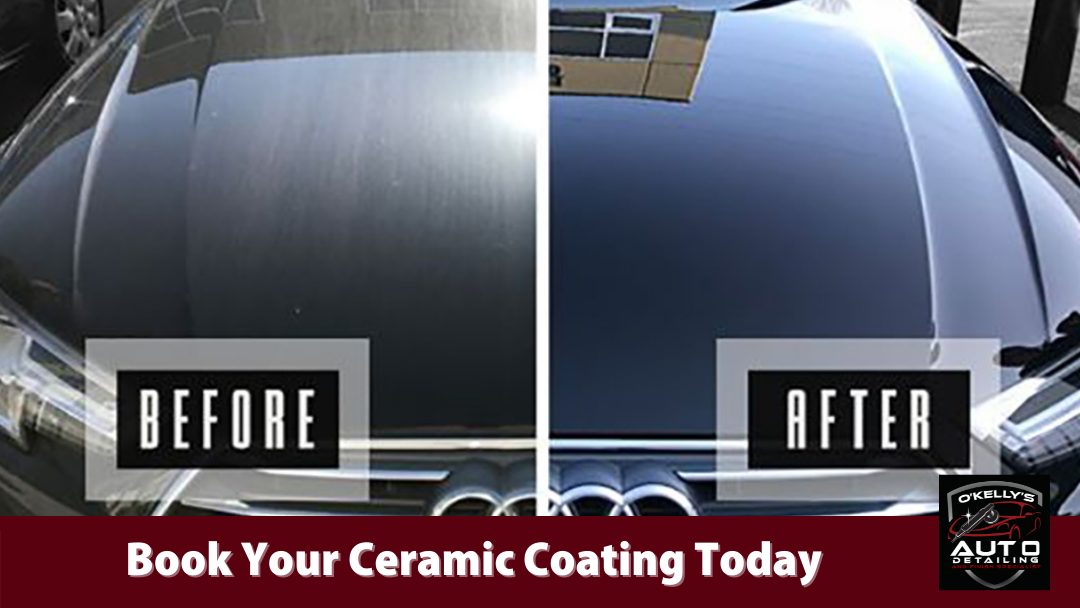The Long-Term Benefits of Picking Ceramic Coating Philadelphia for Your Automobile
The Long-Term Benefits of Picking Ceramic Coating Philadelphia for Your Automobile
Blog Article
Why Ceramic Finish Is the Ultimate Service for a Flawless Complete
Ceramic covering has actually arised as a leading service for those looking for a perfect surface for their vehicles, many thanks to its impressive toughness and safety functions. What aspects really established ceramic layer apart?
What Is Ceramic Finish?

When applied correctly, ceramic covering produces a hydrophobic surface that drives away water and dust, making it easier to preserve and clean up. Unlike standard waxes or sealers, which typically supply short-term defense, ceramic coatings can last for a number of years, depending on the product high quality and application approach. The process of applying ceramic finish needs careful preparation, consisting of thorough cleansing and often repaint correction, to make certain optimum bonding and effectiveness.
Ceramic layers are not limited to vehicle surface areas; they can likewise be used on various products, including glass, steel, and plastics, supplying a flexible service for improving defense. In general, ceramic layer stands for a significant improvement in surface defense modern technology, incorporating both useful and aesthetic benefits for a wide array of applications.
Benefits of Ceramic Coating
While several surface protection alternatives exist, the advantages of ceramic finish stick out due to its one-of-a-kind residential properties and lasting performance. Among the primary benefits is its extraordinary longevity. Ceramic Coating Philadelphia. Unlike conventional wax or sealants that require constant reapplication, ceramic layers provide a resistant layer that can last for numerous years, considerably decreasing maintenance initiatives
Another notable benefit is boosted defense versus environmental contaminants. Ceramic coverings create a hydrophobic surface area that pushes back water, dust, and different contaminants, making it much easier to clean up. This attribute not only protects the automobile's look but additionally reduces the threat of rust and oxidation, especially in harsh climate condition.
Additionally, ceramic coatings provide premium resistance to UV rays, stopping fading and destruction of paint with time. This UV security is essential for preserving the visual value of vehicles and surfaces exposed to route sunlight.
Additionally, the shiny coating attained with ceramic layer improves the total visual allure, offering surface areas a showroom-quality shine. In general, ceramic finishes stand for a substantial development in surface defense modern technology, offering enduring benefits that accommodate both visual and practical needs.
How It Functions
Recognizing the science behind ceramic finishes reveals just how they supply such remarkable defense and longevity. At its core, a ceramic layer is a fluid polymer that chemically bonds with the automobile's manufacturing facility paint. This bonding develops a protective layer that is both hydrophobic and oleophobic, repelling water, dust, and oil. The key part of the majority of ceramic coverings is silicon dioxide (SiO2), which is originated from quartz. This compound adds to the covering's solidity and resistance to scrapes, UV rays, and ecological impurities.
The application procedure involves numerous actions, including surface area preparation, which is crucial to accomplishing optimal attachment. Once used, the finishing undertakes a treating process, during which it sets and creates a semi-permanent bond with the paint surface area. This bond is what distinguishes ceramic layers from typical waxes and sealants, offering a longer-lasting protective obstacle that can sustain for many years.
Moreover, the thickness of the covering can boost its safety high qualities, making certain that it can stand up to harsh conditions. Inevitably, the scientific research of ceramic coatings integrates sophisticated materials with cutting-edge application methods to deliver an exceptional degree of protection and visual improvement for cars.
Comparison With Traditional Approaches
When contrasted to conventional paint defense weblink techniques such as sealants and waxes,The benefits of ceramic coverings come to be particularly evident. While waxes use a temporary luster, commonly lasting a couple of weeks to a couple of months, ceramic layers offer a durable protective layer that can endure for numerous years. This durability substantially minimizes the frequency of reapplication, making ceramic finishes a much more affordable remedy with time.
Furthermore, standard approaches often need considerable preparation and numerous applications to achieve a sufficient degree of security. In comparison, ceramic coverings bond at a molecular level with the vehicle's surface area, developing a durable guard versus ecological pollutants like UV rays, acid rain, and go road salts. This bond enhances the vehicle's resistance to scratches and swirl marks, which are prevalent with standard waxes and sealers.
Moreover, the hydrophobic residential properties of ceramic finishings repel water and dust, resulting in simpler cleansing and maintenance. In contrast, wax and sealant-treated surfaces can bring in grime, necessitating more constant cleaning - Ceramic Coating Philadelphia. Generally, ceramic layers not only supply exceptional defense yet also supply an extra visually attractive and long-lasting finish, establishing them as the favored option for critical vehicle owners
Application and Maintenance Tips

Making use of a foam applicator, apply the layer in little areas, following the maker's standards concerning density and overlap. Permit adequate healing time between layers, usually 24 hr, to make certain correct bonding. After application, it is essential to stay clear of direct exposure to water or harsh components for at least a week to enable the layer to fully treat.
Furthermore, utilizing a ceramic upkeep spray can improve the layer's hydrophobic buildings and longevity. Regular assessments for any signs of wear will assist go to my site keep the finish's integrity and maintain that immaculate finish.
Conclusion
In conclusion, ceramic finishing arises as an exceptional alternative for achieving a flawless vehicle surface. By developing a durable bond with factory paint, ceramic layer properly guards versus scratches, UV rays, and ecological contaminants.

Report this page